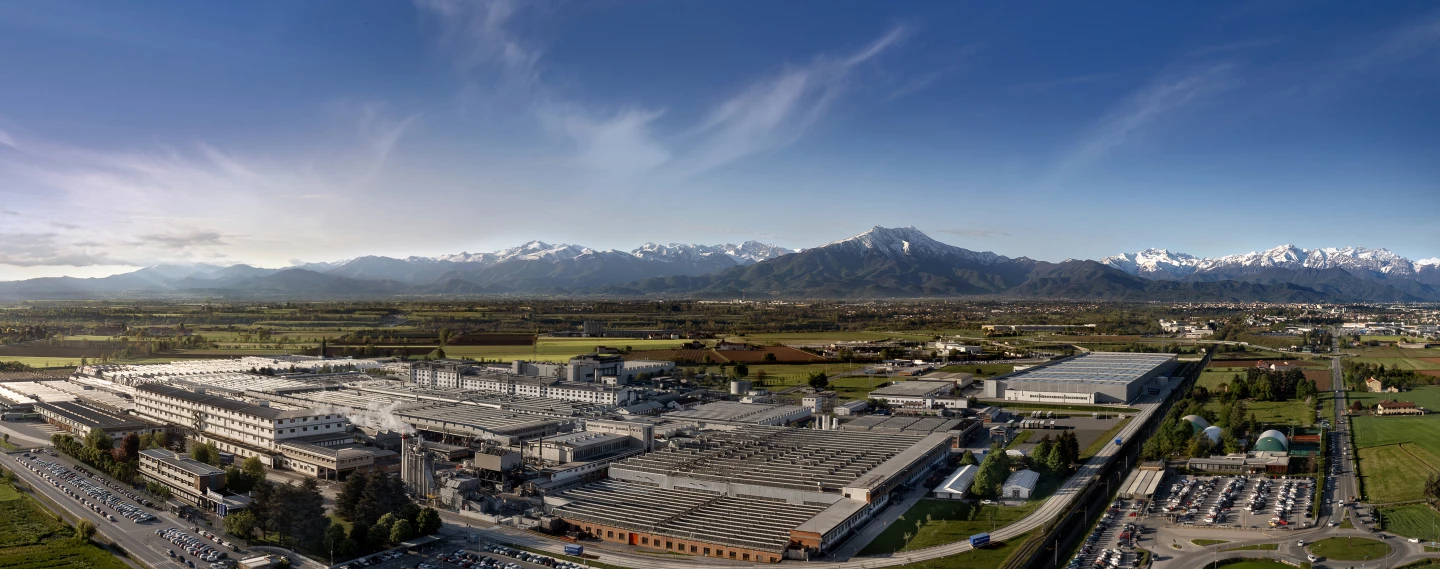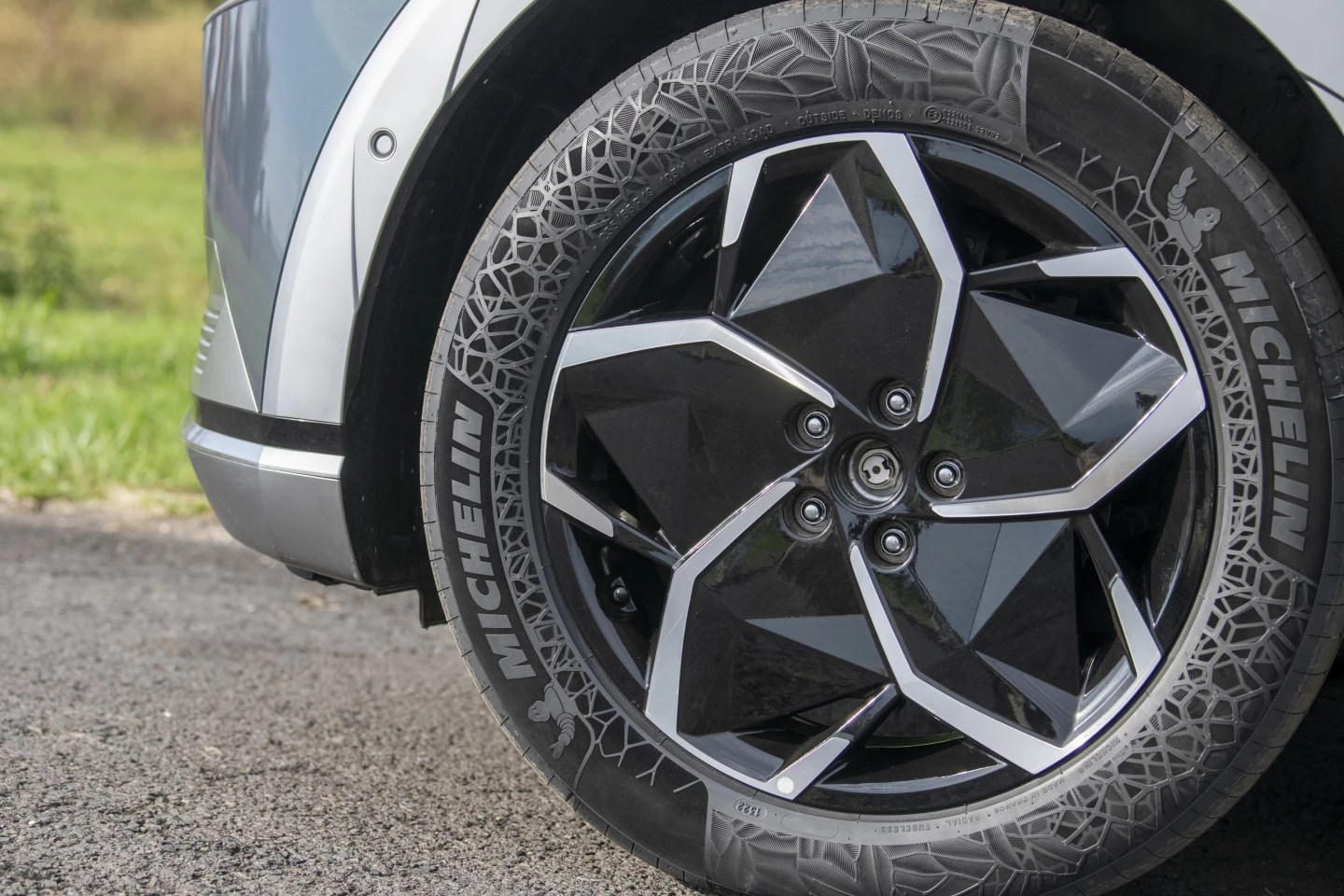The world bought a staggering 2.321 billion tires in 2022 across all categories – a number that's expected to keep growing. What's more, in the passenger car segment, the overall trends are toward bigger cars and electrification, both of which add to weight. So tires are getting bigger and heavier too, and consuming more materials and resources along the way.
Against these complicating factors, Michelin has promised to create nothing but 100% sustainable tires by 2050, with a target of 40% renewable by 2030. That's going to require one hell of an effort at Michelin's scale of operations, and the company flew me, as well as dozens of other media from around the globe, to Cuneo, Italy, to outline the challenge, affirm its commitments, and send a rocket up the backsides of its competitors.

Michelin acts with a surprisingly big lever on environmental issues, by virtue of the sheer number of hoops it sells worldwide. For example, the company has reduced rolling resistance by more than 50% between its first Energy tire in 1992 and 2021's E.Primacy and Pilot Sport EV hoops, saving billions of gallons of fuel and the associated emissions.
It now makes some of the most energy-efficient and long-lasting tires on the market, and as a result it's a popular OEM brand for EVs, adding bonus miles to range figure calculations that are appreciated by automakers and drivers alike. "In fact," says the company's VP of Automotive Original Equipment, Bruno de Feraudy, "today our share of the market for pure EV tires is three times bigger than Michelin's overall market share for OEM."
But at the end of the day, it's a massive manufacturing operation with a considerable environmental impact, producing consumables that degrade into particulate pollution as they're used – even if they tend to abrade away at less than half the rate of the industry average (1.6 kg per 20,000 km vs 3.7 kg per 20,000 km, according to Michelin). And the company seems willing to put its hand up and take responsibility.
"We really need now to get our act together," says Michelin CEO Florent Menegaux. "We've been working a lot on this subject before, but now we have even more incentives to go much faster. We need to continue making products that have less impact as you use them, but we need to produce them in a manner that's also compatible with the environment. The minimum use of materials, but also the minimum use of energy in production. And it's very important that we don't compromise performance to reduce impact on the environment."

Sustainable tires
Many of the raw materials that go into a tire are themselves problematic. Each tire is made from upwards of 200 different ingredients, from natural rubber to synthetic rubber, reinforcing charges like carbon black and silica, textiles, additives and metals. "Seventy percent of the materials come from oil today," says Cyrille Roget, Director of Scientific Communication and Innovation. Indeed, just a few years ago, the sole sustainable material in the tire recipe was the natural rubber itself – which is arguably not that sustainable at all at the scale of the global tire market.
Others, like silica, have their own issues: "You could say," he continues, "that we have plenty of sand on the planet – well, no. If we start to take the quantity of silica you need for tires, the beaches will be completely empty of sand, and it'll take more than a human lifetime to renew them. That's not renewable by our definition."
Michelin has thus settled on its own definition of renewable: materials that are either recycled (some 90% of tires worldwide are now collected for recycling at end of life) – or materials that can be renewed within a typical human lifespan.

In Cuneo, the company presented two new tire prototypes that exceed its renewable targets for 2030: a car tire using 45% sustainable materials, and a bus tire using 58% – both already homologated for road use and out on the roads in testing. These tires source their carbon black from recycled end-of-life tires. Recycled metal forms part of the steel belting. There are sustainable oils, resins and textile stiffeners in the mix, and the silica is sourced from rice husks.
The global cadre of auto journalists had the chance to throw these tires around one of the world's more picturesque go kart tracks, fitted to a big, heavy Hyundai Ioniq 5 more suited to family commuting than hard racetrack cornering. There were no "less sustainable" tires on hand to test against, and nobody was counting lap times, but by all accounts these greener hoops performed like standard street tires, gripping nicely and giving few surprises.
They'll be in mass production across a broad range of sizes, by 2025. That might seem like a long lead time in this day and age, but this is an 132,000-person company running 85 sites across four continents. As part of the sustainability push, Michelin is trying to keep both supply and sales side transport to a minimum. And that's not to mention the sheer volumes this company deals with – just under 200 million tires a year, in more than 9,000 different varieties. There's some rejigging work involved.
"We're not working on a single show tire here," says executive VP Scott Clark. "We're working on integrating sustainable materials on a very large scale, while maintaining the outstanding product performance levels that are unique to Michelin."

Addressing the factories
The products are one side of this, the factories themselves are another. Michelin has set itself some achievable targets here for 2030: a 37% reduction in energy consumption and a 50% reduction in CO2 emissions compared to 2010. A third less water consumption, 50% less organic solvents and 25% less waste compared with 2019 – across all its factories.
Part of this involves a transition to clean energy, and the rolling out of solar panels across the company's massive, suburb-sized factory locations – but technology leaps play a big role too.
A perfect example is in how Michelin is now starting to cure its tires. This job previously used gas boilers and water to create high-pressure steam, which is forced at high pressure into the tire carcass at the end of manufacturing, to distribute heat around the tire compound, press the soft outer layers into the molds that create tread patterns and sidewall markings, and provide the temperatures necessary to vulcanize the rubber. This process is typically responsible for around a third of the energy consumption for an individual tire.
You can see the steam process as part of the fascinating video below, which lays out how a car tire is manufactured, more or less start to finish.
Curing is now possible using a fully electric press. "When you cook your fish, you're cooking with steam," says Pierre Louis Dubourdeau, executive VP of Manufacturing. "The benefit is that the cooking is uniform, right? The heat spreads very nicely. Cooking time is very critical for the performance of a tire. So steam is very convenient, but it's very inefficient. So we've moved to an electric press. That's very, very difficult – imagine you're trying to cook your fish in a toaster. It might be grilled on the outside, but raw on the inside, it's not easy to make it homogenous. It took us 10 years to design a process without compromising quality or performance."
The new electric curing process uses six to eight times less energy than the previous process, and also cuts water usage dramatically. This technology can be retrofitted to a lot of the company's existing curing rigs, and the company is starting to roll it out globally. It's still not possible on the company's biggest tires, but Michelin says it expects more than 70% of its curing equipment to be fully electric by 2050.
On a walking tour of the company's colossal Cuneo plant, it was striking to see the extent of automation involved, from the barrel wrapping line where the carcasses are created, to Wonka-esque snakes of conveyor belts, to Dalek-style single tire transporting robots roaming the floors, and robotic arms lifting raw tires into the presses and pulling the cooked ones out. A new AI-enhanced quality inspection system now assists human tire assessors in fault finding and classification, and autonomous, electric semi trucks carry bulk loads of hoops around the premises.

At the end of the day, it's giant multinationals like this that'll need to do much of the heavy lifting as the world transitions to clean energy and a more ecologically careful approach to the global economy. "Just NGOs will not achieve anything," says CEO Florent Menegaux. "You need corporations. Corporations are set to put means together to produce something, whether a service or a good. I think in resolving the issues that the world has created, corporations are indispensable. They know how to put things together, to produce innovation – and to make profits, therefore they can reinvest."
Any sustainable transition in the tire business will depend not just on technologies and corporate commitments, but on worldwide sustainability regulations, incentives, standards and the decisions of individual and OEM-level tire buyers. But it's certainly been fascinating to learn how one market leader is approaching the challenge.
Source: Michelin













